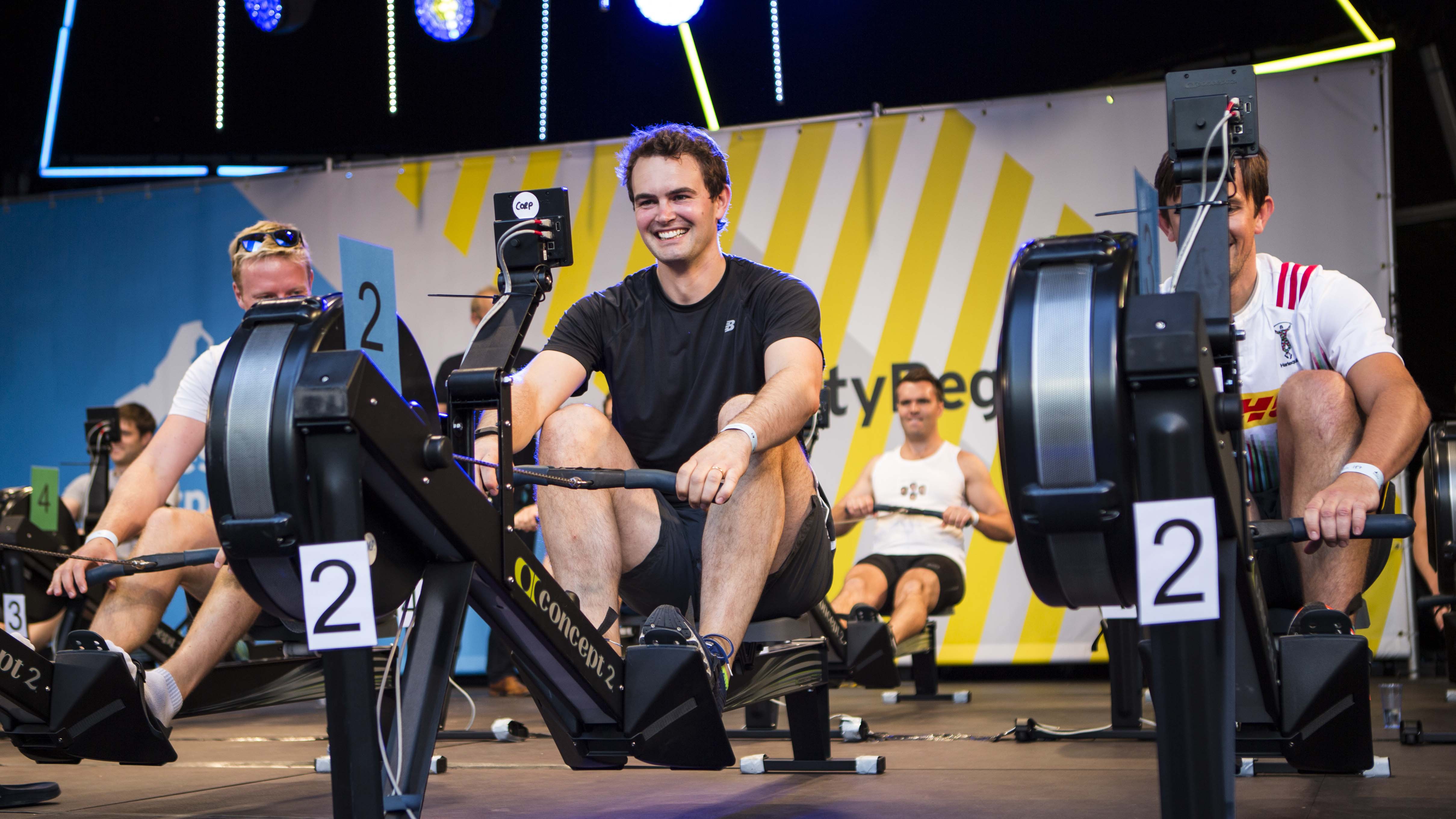Race Day Secrets
If you’ve been indoor rowing for a while, how can you maximise your performance on race day? Who better to ask than Olympic champion Anna Watkins – who holds the world record time for a 5k rowing machine test.

As a self-confessed ergo monster, with a few records to my name, here are my tried and tested secrets for getting the best out of that 2k test.
1. Look on the bright side
This is your chance to see how much your fitness has improved. See it as a measuring exercise. Make sure you are in good shape and healthy before you start.
2. Never stop
Providing you are fit, never ever stop partway through an ergo – whether it’s training or a test. If you’ve gone off too hard, feel sick, whatever the voices in your head are telling you, never stop. Even if you limp home with 3 minute splits, you always have to complete the distance or time. The only exception to this is if you injure yourself or feel seriously ill during the ergo. You need to train your brain to be tough.
3. Do some physical preparation
For a 2k test, you need to do at least 2 x 1,000m with a short break between, and some shorter pieces. I like to do 1,250m or even 1,500m to boost my lactate tolerance about a week before the main test.
When you get down to the last week or so, you should be doing a practice piece every other day. Do a long piece a week before, then 2 x 1,000m, then 2-4 x 500m, and finally 2 x 250m the day before the test. These should each target a specific section of the test, and you should be at your goal split and rate, even if it feels easy. So practise starts, mid-race pace and finishes, and rehearse your mental plan at the same time. Alongside this, minimise your other training if you can.
4. Know your pacing
For your target time, work out your required average 500m split. Aim to be a second quicker than your required average in the first and last 500m, which is mostly achieved in the first and last 100-200m! Aim to be a second slower than your average in each of the middle 500m sections – this is your mid-race pace and you’ll actually do most of the test at this pace.
You need to know what rate works for you too; for most people this is somewhere between 28 and 34. If you are huge it’s probably lower, if you are lighter and quick then the higher end is all yours. It’s about what is most efficient and natural for you, so play around with it a bit until you find your sweet spot.
Practise hitting your rate and split with your eyes closed. Look at your previous test splits to see where you were weakest and target this with your best motivational thoughts. Use the power curve display if possible – it’s great feedback that lets you know if you’re falling apart technically and keeps your mind off how far you’ve got to go.
5. Have a plan for your head
We all know that ergo tests are the natural home of the darkest thoughts and the deepest self-doubt. This is normal and afflicts everybody, and the key to dealing with it is to have a plan to fight back. Think about what really motivates you, what gets you excited and fired up. It could be a person you want to make really proud, the mental picture of racing past the enclosures at Henley, or the crew or individual you really want to crush. Break the test down into sections and use one of these thoughts for each section. During your preparation pieces, try to conjure up these feelings and images as realistically as possible. It’s a big help!
6. Take control
If you’ve done your prep then you know your pacing and mental plan; you know your warm-up routine and you know the drag you want. Arrive early to do a short warm-up a couple of hours before. I usually row 2k at steady state, with a few bursts at race pace, and visualise the test. Then rest. Warm up again for 15 minutes before the test, doing some mid-pace bursts and a start or two. Do learn to set the drag so that it is consistent during your preparation and the test, and always check this before you start.
Take food and drinks you know will sit easily on your stomach. Don’t eat or drink too much before the test – you don’t need that many calories and you don’t want to be sick, but do make sure you start the day well hydrated.
Go and look at the room where the test will be, find out which machine is yours. Don’t be afraid to be fussy, if you don’t want that mirror or fan blowing on you, be firm and get rid of it! Though if you’re at the Indoor Championships you might not be able to do that. Sit on your machine. All you have to do is start, and then follow your plan. This is your territory now, in 6/7/8/9 minutes it will all be over so use those minutes to do something to be proud of.
7. Don’t go off too hard
When the test starts, allow yourself ten strokes flat out and then start to think about gradually coming onto your mid-race pace and rhythm so that you hit it by about 250-300m. The start of an ergo test is no place for heroics. Once you’re on pace, stay consistent, relentless and stoic. Just grind it out. You want heroics? That’s what the last 500m is for. I start counting strokes with 600m to go, I find 2 x 15 and 3 x 10 is about right, trying to ramp it up each time. More power, more rate, whatever you have, half slide is common at this stage; you’re in pain anyway so you might as well… Just remember to undo your feet before you fall off at the end!
Good luck!







